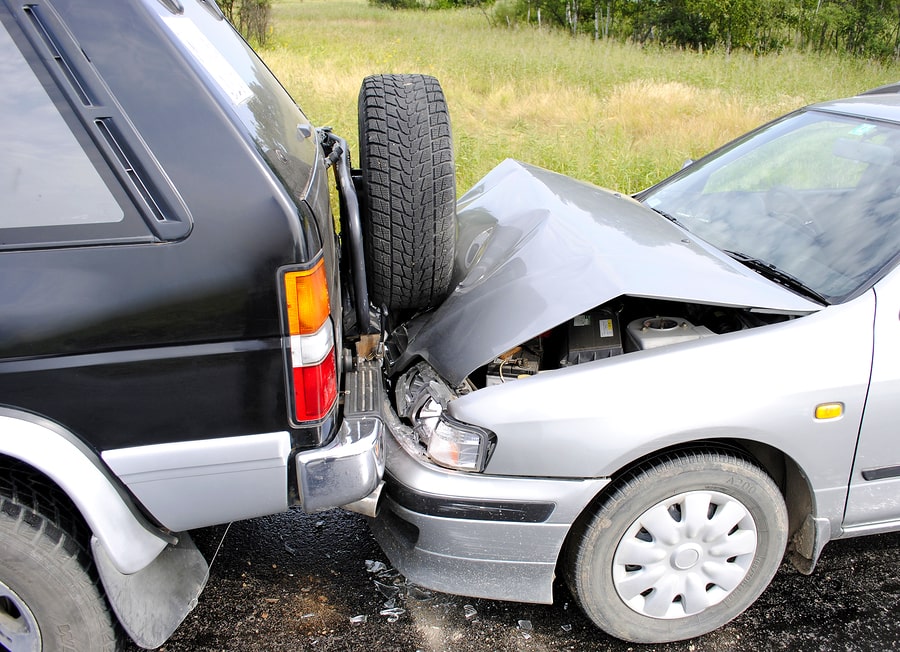
When it comes to traffic accidents, who hit who is a central element in determining who will be liable for victims’ losses. That makes the question of who hit who extremely important to determine for everyone involved. Establishing damages is pretty high on that list, as well, but you can prove damages all day long, and it will not matter if you can’t prove fault. Several parties with a relationship to a traffic accident are interested who is at fault—the insurers for any of the parties involved in the accident, the police, and, of course, the parties involved in the accident.
Each of those parties has a different interest in determining fault, but all of them want to get to the truth of the matter. Everybody involved has a different motive—police want to close the matter, the insurance companies involved each is hoping to put the responsibility for paying claims on another insurance company, and any drivers involved hope to not be found at fault so that their insurance rates don’t go up and so that they can recover damages from the at-fault driver. The motives are different, but the goal is the same—figure out what happened. So, how do they do that?
If you have been involved in a car accident, you have a right to seek financial compensation from responsible parties. Contact an experienced Georgia auto accident attorney immediately to learn about your legal options.
The Police Report Can Impact the Initial Determination of Fault
In many respects, the effort to determine what happened in a traffic accident hinges on what the police determine happened. The police report will be hard to refute when it comes to the finding of fault. Because the police need to know who—if anyone—should be charged with a traffic infraction, they move quickly to determine what happened. They will interview any drivers involved, as well as any available witnesses.
Naturally, the drivers are likely to differ—sometimes significantly—on what happened, and so police make their best effort to interview other witnesses, such as drivers in other vehicles who see the accident, employees at nearby businesses, and the like. Police are likely to issue a citation at the scene if one is called for, so their investigation likely will be limited to information available to them at the scene.
Because of this, if you are involved in a traffic accident, particularly one involving injuries—yours or someone else’s—it is important to gather contact information for witnesses if at all possible. If witnesses have left the scene—they are under no obligation to stay—but you can provide the police with contact information, such as a cell phone number, then the police have access to further information and are more likely to use that access. Many witnesses, especially other drivers, might not wish to remain at the scene waiting for the police. Therefore, you should collect contact information and take pictures. You can provide this information to the police when they arrive, which could provide vital information for the conclusion regarding fault that the police reach in their accident report.
On the flip side of that, you should never admit fault in an accident—not to other drivers or witnesses, and not to the police, even if you think it might have been at fault. Give a factual account of what happened. It is quite likely the police will learn more about what happened, including information of which you are not aware. Let them gather the information and reach their own conclusion without coughing up a confession that actually could be incorrect.
There Are Many Ways to Figure out What Happened in a Traffic Accident
Police can access other sources of information to determine fault. Especially these days, many, if not most, businesses have surveillance cameras. Even cameras positioned inside of a business can capture what happens in the street in front of the business through large windows. Further, businesses that conduct business or have inventory completely or partially outdoors generally have surveillance cameras outdoors.
These businesses, such as gas stations, auto dealerships, plant nurseries, auto repair shops, and many others, are likely to have cameras that capture road activity as well as provide the security function for which they are intended. In traffic accidents with muddled circumstances, the police might ask to view security camera footage at some of these businesses.
Probably for as long as there have been motor vehicle accidents, police have measured skid marks. These can provide useful information, but many accidents simply don’t involve skid marks. Fortunately, other sources of modern technology can assist police in determining fault in an accident.
For instance, most newer models of vehicles—all vehicles manufactured since 2014—are likely to be equipped with event data recorders. While older vehicles might not have event data recorders (EDRs), the EDRs in newer vehicles can provide a tremendous amount of information that can assist the police—or other investigators—in determining fault in a traffic accident. EDRs can provide information on the equipped vehicle’s speed before the crash, as well as information on driver actions, including braking, acceleration, and steering-wheel inputs.
A vehicle’s EDR can provide other information on the crash, as well, including passenger restraint information, and post-crash data such as automatic collision notification information through services such as OnStar. No video or audio information is recorded, so an EDR isn’t quite like the so-called “black box” in commercial aircraft—spoiler alert: the black box is orange—but it can be quite useful. If both or all vehicles involved in the accident are equipped with EDRs, they can prove extremely useful in determining fault.
Insurance Companies Will Conduct Their Own Investigation as Well
While this information and more could be available to police at an accident scene, that doesn’t mean they will avail themselves of the information that is out there. If the police believe fault is clear, they might not look much further. The police are busy. They also might not assign fault at all and issue no citations. While this is less likely, it happens.
The fewer investigatory steps the police take beyond gathering the statements of the drivers and maybe a few witnesses, though, the less authoritative the police report might be, even if the report does assign fault and citations are issued. The more information remains unexamined, the more likely it is that a police accident report can be wrong.
A police report assigning fault to one driver or another is generally considered pretty authoritative. However, insurance companies also investigate fault in a traffic accident—it is their money, after all—and they are not required to accept the police conclusion on fault. It is a difficult hurdle to get over, especially if there is a lawsuit, but the higher the stakes, such as very high damages due to the seriousness of the injuries involved, the more motivation an insurance company has to at least double-check the police report conclusion.
The police might not have followed up on witness contact information, or local business security footage. It is possible they only interviewed the drivers involved and contacted other witnesses still at the scene. They might not have followed up on EDR information from any EDR-equipped vehicles. They might not have checked dashboard camera footage from any of the accident-involved or witness-driven vehicles.
If any or all of these things are true, the insurance company liable for damages under the police report conclusion still might not want to go to the expense of pursuing the issue if the accident is a relatively low-stakes affair. However, liability for injuries damages could involve enough money to change that calculation and lead an insurance company to investigate a police finding of fault on its own.
If the police issue citations on the scene and assign fault in their subsequent report, that doesn’t have to be the end of the matter. If the police did not investigate the sources mentioned above, that could undermine their finding if further investigation of those sources indicates they may have been hasty. Furthermore, police making an on-the-scene determination of fault could overlook other evidence or sources of information.
For example, it is easy to check a driver’s cell phone to determine if it was in use at the time of the accident. Police might not do so at the scene if no witness reports seeing the driver using a cell phone. As cell phone use while driving is illegal in most states, whether talking or texting, that could be an undiscovered factor in fault. Traffic cameras typically do not retain footage for long—some not at all—but footage requested quickly enough might be available.
And, of course, never underestimate the ability of people to step on a rake and incriminate themselves. People brag about the oddest things on Facebook, Instagram, and other social media platforms, including getting away with being at fault for a traffic accident.
What Is an Insurance Company’s Role In Determining Fault?
In the absence of a lawsuit—if only insurance claims are involved—fault is determined by the adjusters for the insurance companies covering the drivers involved in the accident. As often as not, fault is fairly clear, or there is no reason to question the police conclusion regarding fault, and insurance companies will go with that conclusion.
If the company covering the driver found to be at fault in the insurance report challenges that conclusion, it is likely that a lawsuit will follow, filed by the driver found not to be at fault. A lawsuit does not mean a trial, however, as most traffic accident claims, including those where a lawsuit is filed, will settle out of court.
Absent a lawsuit, in general, insurance companies are responsible for determining fault in an accident to determine which company pays. Laws differ from state to state, however, determining how fault is determined and who pays for what kind of damages.
Most states are tort-based, meaning you can sue for damages to property and to person, while in the nine purely no-fault states, the driver’s insurance company pays for medical expenses no matter who causes the crash. The at-fault driver is responsible for property damages but also is responsible for medical expenses that exceed the other driver’s insurance coverage.
Three states—Kentucky, New Jersey, and Pennsylvania—allow drivers a choice between tort and no-fault coverage. Tort coverage means that a driver is allowed to sue the other driver for damages, both property and medical.
Also, no-fault does not truly mean “no fault.” The at-fault driver—or his insurance company—remains liable for the other driver’s property damage and for medical expenses that exceed the other driver’s insurance coverage. Hence, even in a no-fault state, a driver remains at fault and is responsible for certain damages suffered by the other driver.
Insurance companies, no matter whether the state is no-fault or tort, will examine the damages—property and personal or medical—and all of the known events leading up to the accident. They will interview the drivers and witnesses they can, as well as any other available evidence they think will be useful in determining fault. From that, they will decide who is responsible for paying damages. This can be complicated by accidents involving multiple drivers. It also can be complicated by standards of fault that differ from state to state. In general, the driver whose negligence caused the accident will be liable for the damages.
Fault can be a tricky issue, and the answers vary from state to state as to the impact of fault on recovery. Ultimately the decision on fault is not yours to make. The police and insurance companies will play a major role in making that determination. Sometimes, so will a jury. If you need information or assistance on car accidents and who’s at fault in Georgia, contact an experienced car accident attorney today.














